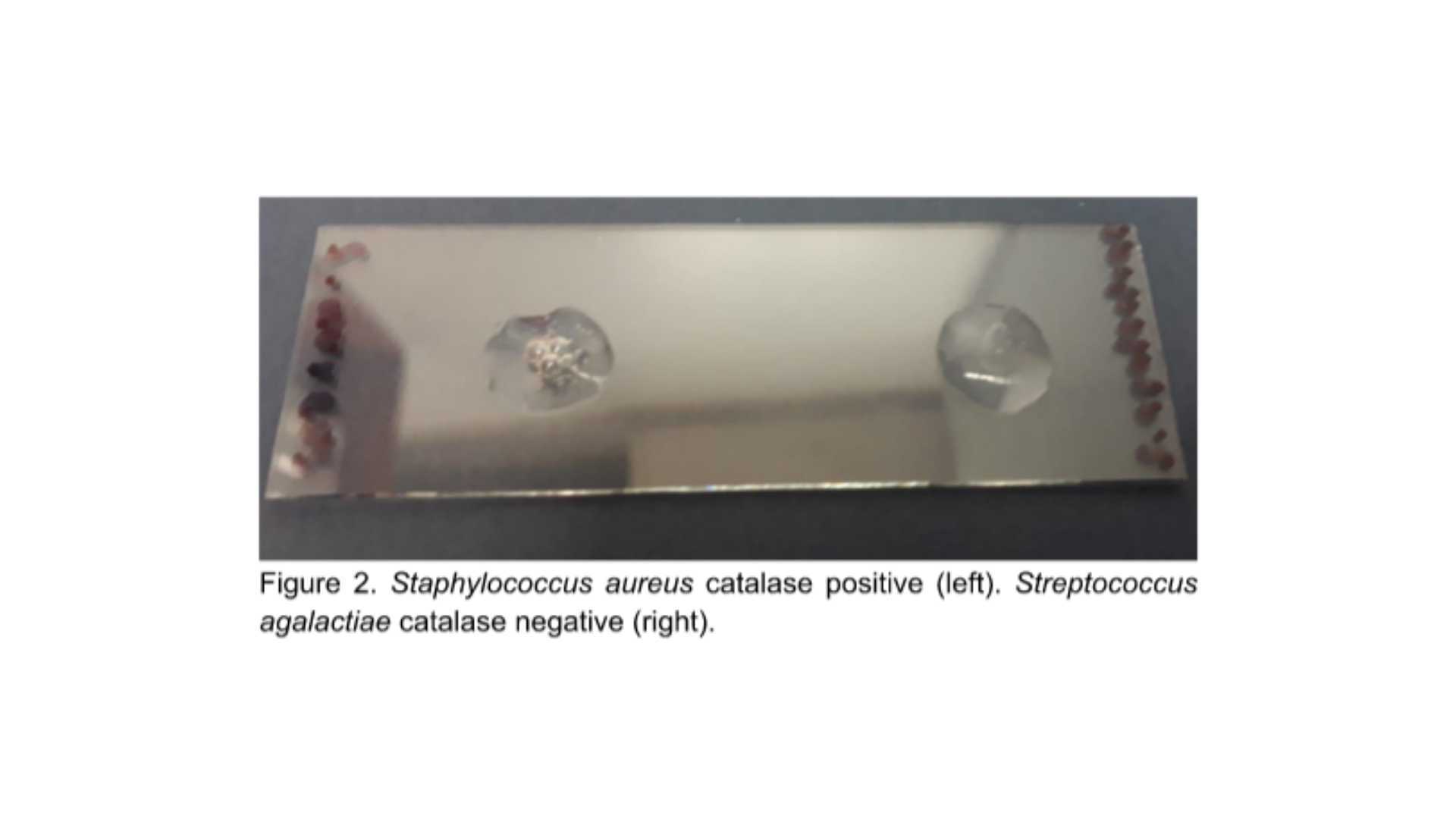Catalase test for bacterial identification
Lydia G. Rivera-Morales
Published: 2022-03-18 DOI: 10.17504/protocols.io.b4yjqxun
Abstract
The catalase enzyme is found in most aerobic and facultative anaerobic bacteria that contain cytochrome, being the main exception Streptococcus. Organisms that do not have the cytochrome system also lack the enzyme catalase and therefore cannot break down hydrogen peroxide.
Steps
1. NOTE: Culture should be 18 to 24 hours old. Metal loops could cause falsepositives.
Transfer 2-4 colonies of the bacterial growth in blood agar plates to a glass
slide using a sterile plastic loop, make circles, and let it dry.
Note
2. NOTE: Store the hydrogen peroxide in a dark bottle and avoid exposure tolight. Keep refrigerated when not in use.
Place a drop of hydrogen peroxide (H 2 0 2 ) on the glass slide with an
eyedropper.
Note
3. NOTE: Group B Streptococcus agalactiae is catalase-negative.
Observe immediate results.
Positive: The oxygen released will be observed as a formation of bubbles.
Negative: No or very few bubbles produced.
Note


